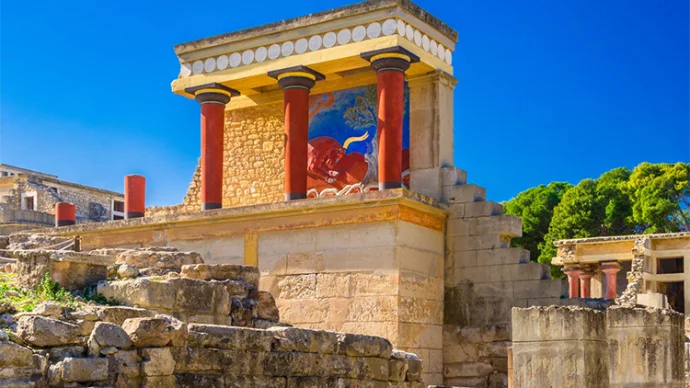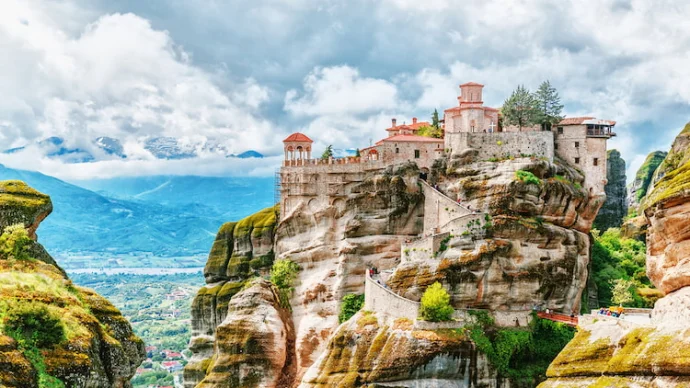
About Knossos
Knossos or ‘ko-no-so’ was an important ancient site found on the outskirts of the modern city of Heraklion on Crete. It is believed that Knossos was first established a place of settlement in Neolithic times in around 7000 BC and then continuously inhabited until the Ancient Roman period. The site also features as one of our top ten tourist attractions of Greece.
Knossos history
Knossos reached its peak in the period from the 19th to the 14th centuries BC, as the capital of the Minoan civilisation. It was at this time that the majority of its incredible buildings, the remains of which can be seen today, were constructed, although it suffered large-scale destruction sometime between 1500 and 450 BC.
Later populated by the Mycenaeans, Knossos experienced a resurgence in the Hellenistic period and was occupied by the Romans in 67 BC. In addition to being a prosperous city, Knossos was also been the setting for many mythical stories, including those of the Minotaur, Ikaros and Daidalos.
Excavated and vastly reconstructed in the 19th century by archaeologist Arthur Evans, Knossos has revealed a wealth of ancient treasures, not least of which are its many fascinating ruins available to see today.
Knossos today
Today, the most famous of these is the Knossos Palace, also known as the Labyrinth for its incredible maze of passageways and rooms. A guided tour takes around an hour and a half.
Believed to date back to 2000 to 1350 BC, Knossos Palace is thought to have been the home of King Minos, an iconic monarch of the island of Crete who legend says was the son of the deities Europa and Zeus. The Palace of Knossos contains a myriad of rooms, including banqueting halls, religious shrines and even a throne room, all centred on a courtyard.
Other important buildings at Knossos include the 14th century BC Royal Villa with its pillar crypt, the Little Palace, believed to date back to the 17th century BC, the ornately decorated House of Frescos and the Villa of Dionysos, a 2nd century BC house from the Roman period. The drainage system at Knossos is also fascinating in its own right, indicating an incredible level of sophistication.
The great thing about Knossos is that its reconstruction has meant that it’s easy to identify the original use of each part of the site. However, it’s best to take a guidebook, a map or even a guide if you want a better idea of the site as a whole, particularly as it is indeed a labyrinth.
Getting to Knossos
Take bus 2 which will be marked ‘Knossos’ from Plateia Eleftherias Square bus stop at the Astoria Hotel in downtown Heraklion. The buses come every 20 minutes or so and the trip takes about 20 minutes.
Featured In

Crete's Ancient Sites
Explore Crete's ancient history at these remarkable sites.

Incredible Ancient Ruins for Historic Photography
Looking for inspiration for your next photo project? Explore some of the most breathtaking and photogenic ancient ruins with this list.

Greece Historic Sites
Alongside its contributions to philosophy, astrology, and medicine, Greece's sites from classical antiquity have stood the test of time. Here are 10 must-see sites for any visiting history enthusiast.




















